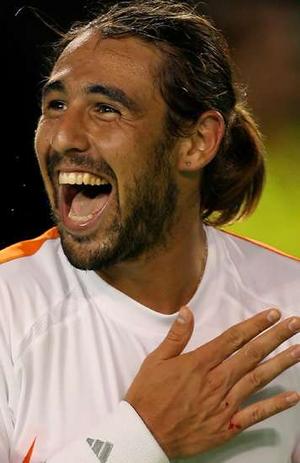
Andre Agassi confessed, in his autobiography that he tested positive to anti-doping tests but lied to the ATP to escape ban. The first player to complete the career Grand Slam in the Open era assumed an higjly addictive drug, the crystal methamphetamine: it’s not an enhancing-performance substance, but it’s meant for personal use, considered as a recreational drug like the cocaine.
He took the meth (possession of which carries a maximum five-year jail sentence in the US) in 1997, a period signed by doubts, falling form, and the ending of his turbulent marriage with the actress Brooke Shields. In his book, he so recalls the episode:
“Slim [his assistant coach at the time] is stressed too ... He says, You want to get high with me? On what? Gack. What the hell’s gack? Crystal meth. Why do they call it gack? Because that’s the sound you make when you’re high ... Make you feel like Superman, dude.
“As if they’re coming out of someone else’s mouth, I hear these words: You know what? F*** it. Yeah. Let’s get high.
“Slim dumps a small pile of powder on the coffee table. He cuts it, snorts it. He cuts it again. I snort some. I ease back on the couch and consider the Rubicon I’ve just crossed.
“There is a moment of regret, followed by vast sadness. Then comes a tidal wave of euphoria that sweeps away every negative thought in my head. I’ve never felt so alive, so hopeful — and I’ve never felt such energy”.
But this isn’t the most shocking part of his confession. Andre would have lied to the ATP, and the tennis authorities would have accepted his lies interwoven with true parts; the American avoided a three months suspension after an autumn when he pulled out of the Roland Garros and didn’t bother to practise for Wimbledon. “I say Slim, whom I’ve since fired, is a known drug user, and that he often spikes his sodas with meth — which is true. Then I come to the central lie of the letter. I say that recently I drank accidentally from one of Slim’s spiked sodas, unwittingly ingesting his drugs. I ask for understanding and leniency and hastily sign it: Sincerely. I feel ashamed, of course. I promise myself that this lie is the end of it.”
This story generates two reflexions. On the one side, about the role and the behaviour of the ATP, now attacked by player for the new stricter rules, although they have never accomplished a top-player suspension, except for Gasquet (excused anyway for his cocaine-filled kiss during a party). This result is the product of a substantial correctness in player’s mood, or this could imply that even nowadays ATP could cover some misconduct with the purpose of avoiding a collapse in the reputation of the sport? Probably we’ll know the truth in a decade or so, when the autobiographies of actual champs will be sold.
Agassi also said he has inside hated tennis, also if he invented a new way of playing, “the baseliner counter-attacker”, with the mood of Bjorn Borg and the feet on the baseline, with half-volley groundstokes and an extraordinary sense of advance. He felt tennis more than simply playing it.
“I was actually excited about telling the world the whole story”, he concluded. Also Boris Becker, in 2003, in his autobiography, confessed to have played for most of 1990 and 1991 under the effect of sleeping drugs, so implicitly diminishing Stefan Edberg’s triumph at 1990 Wimbledon. Perhaps has Andre’s happiness something to do with the certainty that such a scoop would make the sales grow?










